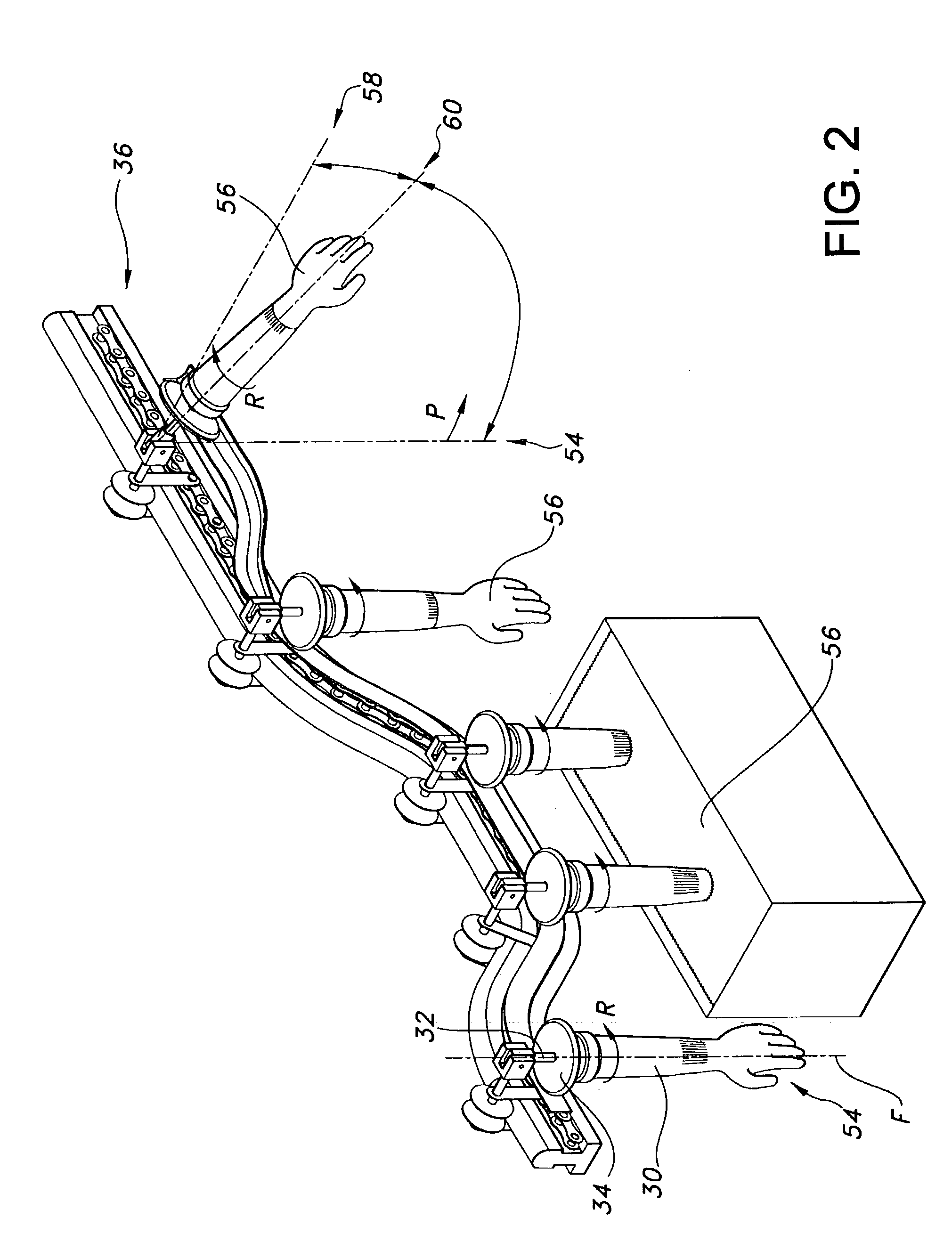Polyvinyl chloride article having improved durability
a polyvinyl chloride and durability technology, applied in the field of polyvinyl chloride articles having improved durability, can solve the problems of common failure of the fingertip in the glove due to puncture, health hazards, and compromise the barrier afforded by the glove, and achieve the effect of improving the puncture resistance of the fingertip
- Summary
- Abstract
- Description
- Claims
- Application Information
AI Technical Summary
Benefits of technology
Problems solved by technology
Method used
Image
Examples
example 2
Thirty-three gloves made according to the present invention were evaluated for finger tip puncture resistance according to the procedure set forth in Example 1.
To form the experimental gloves, the formers were first heated to a temperature of about 65° C. The formers were then dipped into a plastisol containing PVC, a plasticizer, and a heat stabilizer. The plastisol was maintained at a temperature of about 65° C. The formers were dipped vertically into the plastisol for about 3 seconds. Upon removal from the removed from the plastisol, the formers were permitted to drain for about 42 seconds and rotated to a second position that formed an angle of about 80 degrees from the vertical dipping position. While being maintained at the second position, the formers were then sent through a fusion oven maintained at about 200° C. for about 5-6 minutes. The formers were then cooled to a temperature of about 100° C. using fans.
The formers were then dipped into a composition including an ...
example 3
A simulated use in durability study was performed to evaluate the glove of the present invention. The study was designed to mimic the stresses on examination gloves in clinical situations, and is described in detail in “Performance of latex and nonlatex medical exarmination gloves during simulated use” by D. Korniewicz et al. (American Journal of Infection Control, Vol. 30, No. 2, pp. 133-138). In general, the subjects are asked to don the glove sample and perform the following tasks: (1) connect a syringe to a stopcock, turn it on and off 30 times, then disconnect the syringe using a hemostat, and repeat this procedure 10 times; (2) connect and disconnect a suction tube to a catheter 10 times; (3) wrap a blunt object (e.g. an artificial hand) with gauze and apply 2 pieces of fresh tape 3 times; and (4) rub each gloved hand with a washcloth in clean water with the following sequence: palm, each finger in a twisting motion, thumb, and back of hand. After completion of the each task,...
PUM
| Property | Measurement | Unit |
|---|---|---|
| Thickness | aaaaa | aaaaa |
| Thickness | aaaaa | aaaaa |
| Thickness | aaaaa | aaaaa |
Abstract
Description
Claims
Application Information
 Login to View More
Login to View More - R&D
- Intellectual Property
- Life Sciences
- Materials
- Tech Scout
- Unparalleled Data Quality
- Higher Quality Content
- 60% Fewer Hallucinations
Browse by: Latest US Patents, China's latest patents, Technical Efficacy Thesaurus, Application Domain, Technology Topic, Popular Technical Reports.
© 2025 PatSnap. All rights reserved.Legal|Privacy policy|Modern Slavery Act Transparency Statement|Sitemap|About US| Contact US: help@patsnap.com



